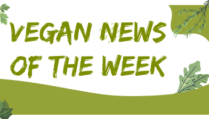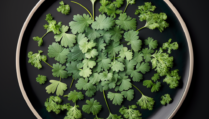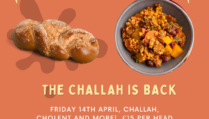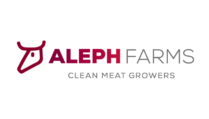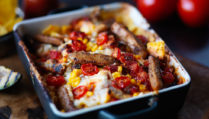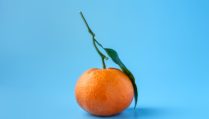Diet and nutrition advisor Maya Segal introduces us to eight flowers you can add to your salads…

Flowers are a very exciting ingredient to add to our salads – straight from a large garden or modest windowsill. Not only will flowers make any salads look extraordinary and fun, but flowers are flavourful, nutritious and healthy. Historically, fresh flowers have always been used. Rose petals in India, daylily buds in China, violets in Rome, and squash blossoms in Spain. Today, over 20,000 types of plants have been labelled as ‘edible’. We eat only a tiny fraction of these. What a fantastic and easy way to increase variety in out diet by using some of the 42 edible flowers that can be easily grown around us. Once the flower appears, the plant’s energy resources become more dedicated to flowering than growing the leaf. This means that the energy in the flower is extremely intense and powerful.
How are flowers good for our health?
Flowers are natural plant foods containing valuable nutrients. Here are 8 common flowers that are easily found and easily grown that make a delicious addition to any salad:
Rose petals contain bioflavonoids and antioxidants, as well as vitamins A, B3, C and E. Some variety of roses taste like sweet strawberries, while others taste slightly sour or spicy. In general, the darker the rose, the stronger its flavour.
Calendula / marigold: A very common English flower and a great flower for eating. Calendula blossoms are peppery, tangy, and spicy — and their vibrant golden colours add a special je ne sais quoi to any dish.
Dandelions contain numerous antioxidant properties and flavonoids, including four times the beta carotene of broccoli. They’re also a rich source of vitamins, including folic acid, riboflavin, pyroxidine, niacin, and vitamins E and C.
Nasturtiums are a very common edible flower with an amazing mustardy flavour. They contain cancer-fighting lycopene and lutein, and a carotenoid found in vegetables and fruits that is important for healthy vision.
Violets, like the ones planted by our gardening team outside our JVS office, contain rutin, a phytochemical with antioxidant and anti-inflammatory properties that may help strengthen capillary walls.
Basil blossoms come in a variety of colours, from white to pink and lavender. The flavour is similar to the leaves, but much milder.
Allium: All blossoms from the allium family (leeks, chives, garlic and onions) are edible and flavourful. Flavours range from delicate leek to robust garlic. Every part of these plants is edible. Chive blossoms (the purple flower of the chive herb) contain vitamin C, iron and sulphur, and have traditionally been used to help support healthy blood pressure levels.
Lavender contains vitamin A, calcium and iron, and is said to benefit your central nervous system and perhaps improves perception. Be cautious. Start slowly when eating flowers because they can have very powerful effect. Flowers are tiny but they have have a powerful punch, especially if they’re new to your diet.
Introduce them sparingly at first to avoid any potential digestive upset or allergic reactions. This is especially important if you have allergies to pollen, as eating flowers may exacerbate your symptoms. Even organic, high-quality edible flowers can cause an unexpected reaction in some people.
Try them one at a time and in small amounts to see how your body is going to react.
Important note: most flowers from a florist, nursery or garden centre are not edible, as they have most probably been heavily treated with pesticides. The same goes for flowers you find near a roadside or in any garden that has been treated with chemicals.
You must stick to organically grown flowers, or those you grow yourself without pesticides or herbicides.


